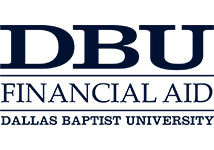Loans
Educational loans are a part of a family of aid known as Self-Help Aid. The purpose of student loan programs is to assist students in covering the costs of attending college such as tuition, room and board, and textbooks. After these costs have been paid, the remainder of your student loan funds may be available to cover additional education expenses. Students are encouraged to borrow only what they need to cover direct educational expenses as student loans must be repaid.
FAFSA
To qualify for assistance in the Direct Loan program, students must complete the:
Before the Federal Direct loan funds can be disbursed to any student account, students are required to secure their loans at studentloans.gov and complete both the online Entrance Counseling and electronically signing their Master Promissory Note (MPN).
Learn about Loan Entrance Counseling >>
Exit counseling will be required from students upon their graduation or withdrawal from the University. Exit counseling is required by Federal regulation and should be completed within 30 days of graduation or upon withdrawal from the University.
Learn about Loan Exit Counseling >>
Learn more about Loans >>
Types of Loans
What is the difference between the Subsidized and Unsubsidized Loan?
Direct Subsidized
On this type of loan, the interest which accrues on a loan while a borrower is in school, during their grace period or authorized periods of deferment, is paid by the government. While there are more rigid eligibility requirements to qualify for a Direct Subsidized Loan, it is more beneficial to a borrower because the accrued interest is subsidized while in school.
Direct Unsubsidized
On this direct loan, interest begins to accrue beginning at the time of disbursement and the student borrower is fully responsible for paying the interest that accrues.
Both loans may be paid when a student is in school without the risk of penalty.
| Combined Subsidized and Unsubsidized Annual Loan Limits | |
|---|---|
| Dependent Freshman (Freshman=0-29 hours completed) $5,500.00 |
Independent Freshman (Freshman=0-29 hours completed) $9,500.00 |
| Dependent Sophomore (Sophomore=30-59 hours completed) $6,500.00 |
Independent Sophomore (Sophomore=30-59 hours completed) $10,500.00 |
| Dependent Junior/Senior (Junior/Senior=60+ hours completed) $7,500.00 |
Independent Junior/Senior (Junior/Senior=60+ hours completed) $12,500.00 |
| Graduate Student $20,500.00 |
|
Before considering private educational loans, it is important to apply for all other types of aid. Please complete a Free Application for Federal Student Aid (FAFSA) to apply for federal and state grants, federal work-study, and low-interest federal loans.
For many students, the number of family resources, scholarships, and grants does not cover the entire cost of education. And, even after students have received low-interest federal student loans, they may still need additional resources. These students and families may benefit from receiving low-interest alternative student loans to help cover the remaining costs associated with attending DBU. We have compiled a list of other federal, state, and private loan resources to help bridge this gap.
The U.S. Department of Education makes Direct PLUS Loans to eligible borrowers through schools participating in the Direct Loan Program. This is a credit-based loan. Parents may borrow for their dependent undergraduate students under the Federal Direct Parent Loan for Undergraduate Students program (PLUS).
Here’s a quick overview of Direct PLUS Loans:
- The student’s FAFSA must be completed before an application is made.
- The U.S. Department of Education is the lender.
- Parents must not have an adverse credit history as a credit check will be conducted. If there is an adverse credit history, it is still possible that a parent would still be able to receive a PLUS loan if additional requirements are met.
- Parents must not be in default on any Federal Student Loans or owe a refund on any Federal Grants.
- Applying parent(s) must be US Citizens.
- The maximum PLUS loan amount a parent can receive is the cost of attendance (determined by the school) minus any other financial aid received.
- An origination fee will apply.
NOTE: If the PLUS Loan is denied, the student may then be eligible to borrow additional funds under the Federal Unsubsidized Loan program.
Additional Parent Plus loan information >>
To apply or obtain additional Parent PLUS loan information, please visit StudentAid.gov.
Graduate students who have exhausted the Stafford Loan eligibility may apply for a Graduate PLUS Loan up to the cost of attendance. If there is an adverse credit history, it is still possible that a student would still be able to receive a Graduate PLUS loan if additional requirements are met. To apply or obtain additional Graduate PLUS loan information visit StudentAid.gov.
Before considering private educational loans, it is important to apply for all other types of aid. Please complete a Free Application for Federal Student Aid (FAFSA) to apply for federal and state grants, federal work-study, and low-interest federal loans.
Other Important Information
Loan funds are normally disbursed to student accounts in equal amounts, per Federal guidelines, twice per loan period. For example, if the student's loan period consists of the Fall and Spring semesters, one disbursement will be made in the Fall and one in the Spring.
Each equal disbursement is applied to the student's account approximately one week after the add/drop period ends for that semester. If the loan period is one semester only (example, Summer), then only one disbursement is made early in the semester (after the add/drop period ends).
DBU participates in Electronic Funds Transfer (EFT) for loan payments into student accounts.
Undergraduate students who are completing their degrees and will be attending only a portion of the academic year will have their loan amounts adjusted (lowered), or "pro-rated," according to Federal regulations. The loan limit proration determines the maximum loan amount that a student may borrow for the final term of study based on the degree they are earning.
Students who graduate in the Fall term (or who enroll in the Spring term only during the academic year and graduate) will have their Federal Direct Loans prorated during their final semester. This means you will receive an adjusted amount of your annual Direct Loan(s) based on your enrollment for that awarding year.
It is important you notify the Office of Financial Aid that you plan to graduate after fall registration and before your student loan has disbursed at the beginning of the term.
Important Notice:
- Students who notify our office that they will be graduating Fall/December of your awarding semester AFTER loans have been disbursed:
- Your annual Direct Student Loan limit will be adjusted (prorated) for your final term which may result in a bill with the university.
- Students who notify our office that they will be graduating Fall/December of your awarding semester BEFORE loans have been disbursed:
- Your annual Federal Direct Loan limit will be prorated for one semester resulting in your Direct Loan being correctly disbursed.
Loan Proration Formula:
Credit Hours Enrolled (Example 12 hours) is divided by the Credit Hours in an Academic Year (24 hours) and then multiplied by the student’s annual Direct Loan Limit. This ratio is then applied to the Annual Direct loan limit and the result is the maximum loan for which the student may qualify.
Undergraduate Dependent/Independent Prorated Loan Eligibility Chart
|
Dependent Student |
|||
|
Credit Hours - Final Semester |
Subsidized Loans |
Unsubsidized Loans |
Total Combined |
|
20 |
$4565 |
$1660 |
$6225 |
|
19 |
$4345 |
$1580 |
$5925 |
|
18 |
$4125 |
$1500 |
$5625 |
|
17 |
$3905 |
$1420 |
$5325 |
|
16 |
$3685 |
$1340 |
$5025 |
|
15 |
$3465 |
$1260 |
$4725 |
|
14 |
$3190 |
$1160 |
$4350 |
|
13 |
$2970 |
$1080 |
$4050 |
|
12 |
$2750 |
$1000 |
$3750 |
|
11 |
$2530 |
$920 |
$3450 |
|
10 |
$2310 |
$840 |
$3150 |
|
9 |
$2090 |
$760 |
$2850 |
|
8 |
$1815 |
$660 |
$2475 |
|
7 |
$1595 |
$580 |
$2175 |
|
6 |
$1375 |
$500 |
$1875 |
|
Independent Student |
|||
|
Credit Hours - Final Semester |
Subsidized Loans |
Unsubsidized Loans |
Total Combined |
|
20 |
$4565 |
$5810 |
$10375 |
|
19 |
$4345 |
$5530 |
$9875 |
|
18 |
$4125 |
$5250 |
$9375 |
|
17 |
$3905 |
$4970 |
$8875 |
|
16 |
$3685 |
$4690 |
$8375 |
|
15 |
$3465 |
$4410 |
$7875 |
|
14 |
$3190 |
$4060 |
$7250 |
|
13 |
$2970 |
$3780 |
$6750 |
|
12 |
$2750 |
$3500 |
$6250 |
|
11 |
$2530 |
$3220 |
$5750 |
|
10 |
$2310 |
$2940 |
$5250 |
|
9 |
$2090 |
$2660 |
$4750 |
|
8 |
$1815 |
$2310 |
$4125 |
|
7 |
$1595 |
$2030 |
$3625 |
|
6 |
$1375 |
$1750 |
$3125 |
Additional Federal Direct Student Loan Program Questions
Yes, to qualify for Direct Consolidation Loans, borrowers must have at least one Direct Loan that is in grace, repayment, deferment, or default status. However, loans that are in an in-school deferment cannot be included in a Direct Consolidation Loan.
Borrowers can consolidate most defaulted education loans if they make satisfactory repayment arrangements with their current loan holder(s). To explore your options, view the Federal Direct Loan Consolidation Program for information on consolidating with them:
Students wishing to adjust their original requested or awarded amount in loan funds will need to complete and submit a Federal Direct Loan Adjustment form to the Office of Financial Aid.
The National Student Loan Data System (NSLDS) is the U.S. Department of Education's central database for student aid. NSLDS provides a centralized, integrated view of a student’s federal loans and/or grant data provided to NSLDS from schools, guaranty agencies, the Direct Loan program, and other Department of ED programs as a comprehensive resource for students.
How to get my NSLDS aid summary report?If you need to download an NSLDS report, log in to your account on studentaid.gov using your FSA ID and password. Once you're in your account, hover over your name on the top right of the screen and select "My Aid." From there, you can select "Download My Aid Data." Your data will be downloaded as a . txt file.

